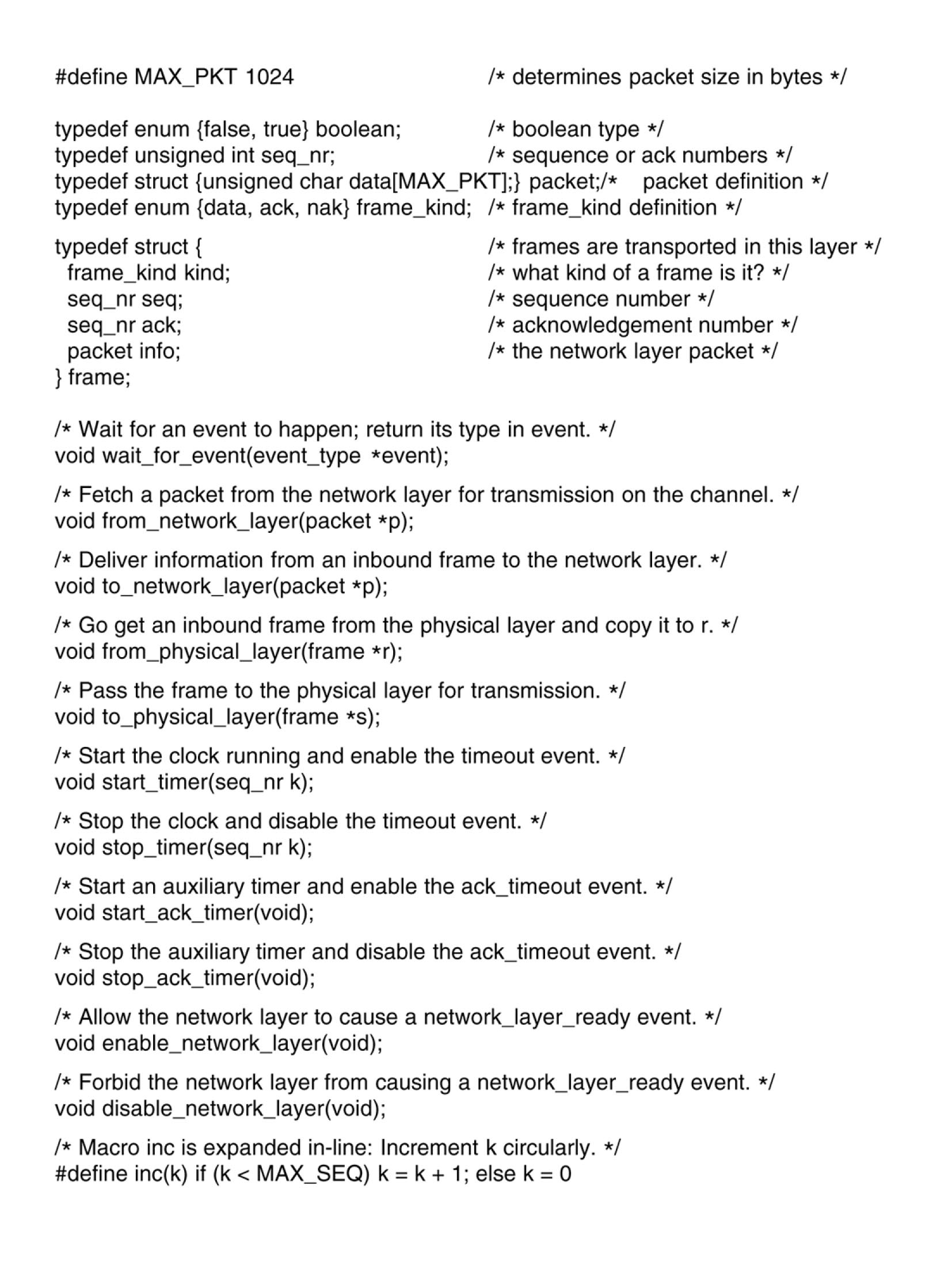Machine A sends to B. Reliable, connection-oriented service.
NA = Network layer on A.
DA = Data Link layer on A.
NB = Network layer on B.
DB = Data Link layer on B.

DA gets packets from NA. Puts them in frame. Calls to_physical_layer to send frame. Hardware computes checksum, appends, and sends.
DB waits for data:
wait_for_event
Instead of busy loop
would be suspended pending interrupt.
When frame arrives, hardware computes checksum.
If error it generates event =
cksum_err
If ok, event =
frame_arrival
and DB can then use
from_physical_layer
to acquire frame.
Strip down to packet.
Pass packet only to NB.
NB is never given any frame info.
Frame format can be changed without Network layer knowing.
seq_nr
numbers frames 0 .. MAX_SEQ
and then back to 0 again
Packet here is of fixed length MAX_PKT
Frame has 3 control fields (header) and 1 data field (packet).
Header = (frame kind, sequence no, ack no)
Frame kind - some frames contain only control info.
Their data field is not used.
For error recovery, we need acks and timeouts.
Need start, stop timer.
If timer already running,
start_timer
resets it to cause the next timeout after another full period.
If no reply after timeout,
event =
timeout
NA might not have packets ready to send,
or DA might not be ready to process them
enable_network_layer
- NA can interrupt when it has a packet to send
disable_network_layer
- NA cannot interrupt, can't send packets until DA is ready
and enables again


Flow control - How to stop fast sender A swamping slow receiver B?
Sender code now has wait_for_event
Note sender does not even look at incoming frame
- it is always an ack.
Note receiver does not put any particular info into ack frame.
Its existence is enough.
Possible solution to errors: Add timer.
Receiver only sends ack if no error.
If no ack, sender re-sends.
Problem:
Good frame sent and received, passed to NB.
Ack sent, but ack lost.
Sender sends same frame again.
Don't want this to be passed to NB - NB already got it.
Solution:
Sequence no.
Can tell original frame apart from re-transmit.
The only ambiguity is between a frame m
and its successor m+1
Sender keeps sending m until gets ack
Then, depending on whether ack got through, it sends m or m+1
So only need 1 bit sequence no.
and flip it between 0 and 1
to express the frame no. we're expecting right now.
Wait for ack before sending next item: PAR (Positive Acknowledgement with Retransmission) or ARQ (Automatic repeat request).

Sender maintains
next_frame_to_send
Receiver maintains frame_expected
For example:
Timeout should be chosen with the line in mind (allow enough time for frame to get to B and ack to get back). Again we see: Most of Data Link layer is hardware-specific, and it hides details of hardware from Network and higher layers.